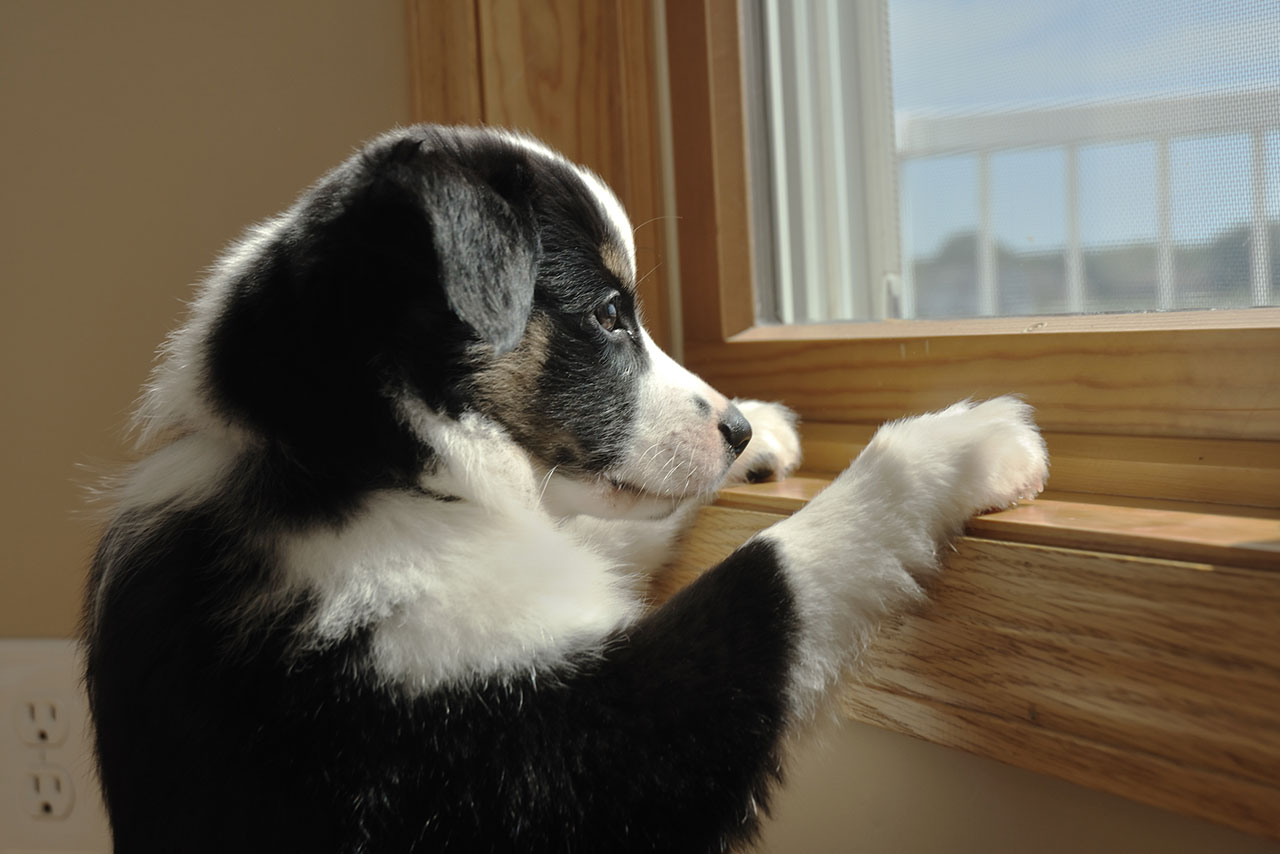Help I Am Alone And I Do Not Know How To Handle It

Recently, I wrote about finding silver linings during this coronavirus pandemic. One of the silver linings is many are getting a puppy or a kitten. Whether it was a financial commitment made to a breeder weeks or months ago or a less planned acquisition given that many of us now have more free time to commit to training and socialization. We are home from work, the kids are home from school, and time at home is abundant. The upside is many puppies and kittens may grow up to be better behaved and better trained pets. Certainly, a silver lining!
However, silver linings, much like real silver, can sometimes tarnish. All this time we are spending at home is great if you are a puppy or a kitten. But these are not normal times. Eventually, we will all go back to work, high school and college will resume or begin in the fall, and life will return to a “normal” schedule. The problem, or the tarnish, is that those puppies and kittens, who are now adolescents, have no idea how to be alone. They have spent their entire lives up to this point surrounded by people and suddenly they are alone. Many will make the adjustment, but many will not.
Alone for the first time and no longer in proximity or the pack, anxiety begins. For dogs this may manifest as drooling, pacing, whining, excessive barking, elimination accidents, chewing or digging, and destroying furniture or woodwork. We think of cats as being or independent even as loners, so it seems like they would not have separation anxiety. It is less common in cats, but it does occur. Separation anxiety in cats occurs as vocalization, elimination accidents, destructive behaviors, hiding and excessive grooming.
As with all behavior issues it is easier to prevent them than to try and fix them once they have occurred. Try to establish daily routines even if you are not currently going to work or school. The goal is to get him accustomed to being alone and learning ways to soothe himself. For puppies start with crate training from day one. This provides them with a safe place that is their own, a den. It is an important training tool for many puppy issues but should never be used as punishment. Start by putting your puppy in his crate for 10 to 15 minutes a day while you are home. Give him a chew toy or a special treat to occupy his mind. This will help him to develop independence and self-confidence. Once he is comfortable with this, put him in the crate with a toy or a treat and leave the house for increasing periods of time. If time permits, try taking him for a walk or play to help tire him out ahead of time. This will be invaluable when work and school schedules resume and your dog has to be home alone for extended periods of time.
Crate training is generally not used for cats, but they do need routine just like dogs. Structure and alone time are important skills for cats to learn as well. While you are at home, now is the time to start planning for going back to work. For cats, place toys or food puzzles around the house. Being engaged in hunting behavior will be a distraction while you are away.
Other suggestions include:
- Act casual about leaving. If you make a big deal about it, leaving will turn into a significant event for your pet. If you are upset, your pet will pick up on it.
- Limit and desensitize triggers. If rattling keys, getting your purse, or putting on a jacket seem to trigger anxiety, carry them around the house for a while each day, without leaving, to help desensitize your pet to these triggers.
- Leave a radio or TV on when you go.
- Practice coming and going.
- Increase your pet’s independence and self-confidence by establishing routines and using basic training exercises.
- Use play and exercise to tire out your pet before leaving. A tired pet is a good pet!
- When you arrive home, greet your pet but do not get overly emotional or make a big deal about it.
- If you come home to an elimination accident or damage, do not punish your pet. It will only increase his anxiety.
- Early in your separation training, use calming pheromones such as Adaptil® for dogs or Feliway® for cats to reduce anxiety.
- Reward good behaviors and ignore bad ones. Rewarding attention seeking behaviors, such as constantly following you around the house, will only make things worse.
Despite best efforts, there are a small percentage of pets that are naturally anxious. If your pet currently has separation anxiety, consult with your veterinarian for treatment options. If it is severe and he or she is unable to help, then your veterinarian will be able to recommend a qualified veterinary behaviorist. With the combination of the correct diagnosis, training, understanding and in some cases medication, treatment for separation anxiety has a good success rate.
During this time of uncertainty when many of us are home for at least several more weeks, use the time constructively to train and help your pet become a loving and well-mannered member of the family. But remember, there will come a day when we all return to normal daily work and school routines. Planning for that now and helping your pet become an independent, confident member of the family who is comfortable being alone will not only benefit you but will improve your pet’s quality of life. Separation anxiety, and anxiety in general, is emotionally and physically debilitating and can lead to many unwanted and dangerous behaviors. The behavioral result of that anxiety is the reason many pets are given up to shelters for adoption. Be proactive and plan for the future today.
